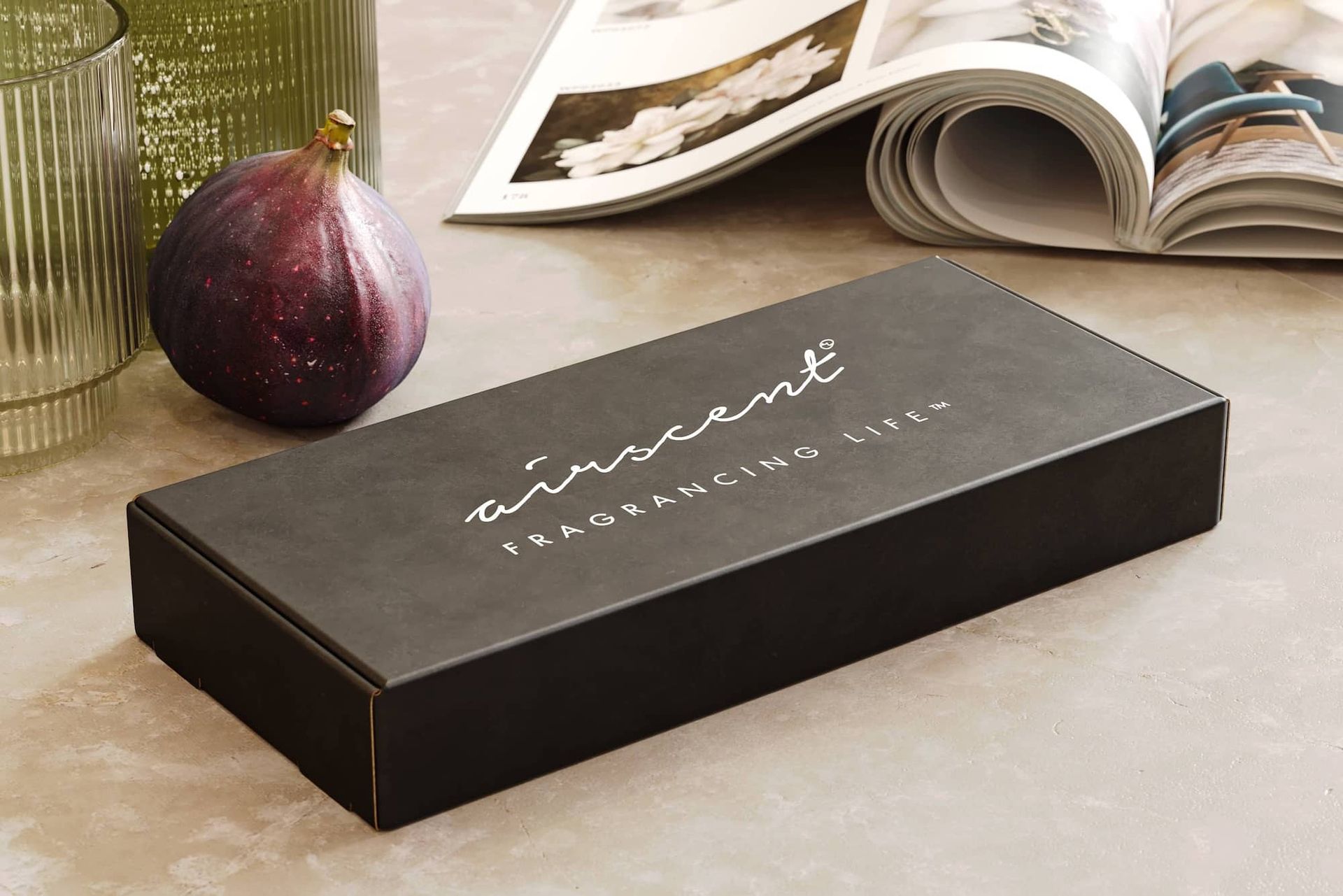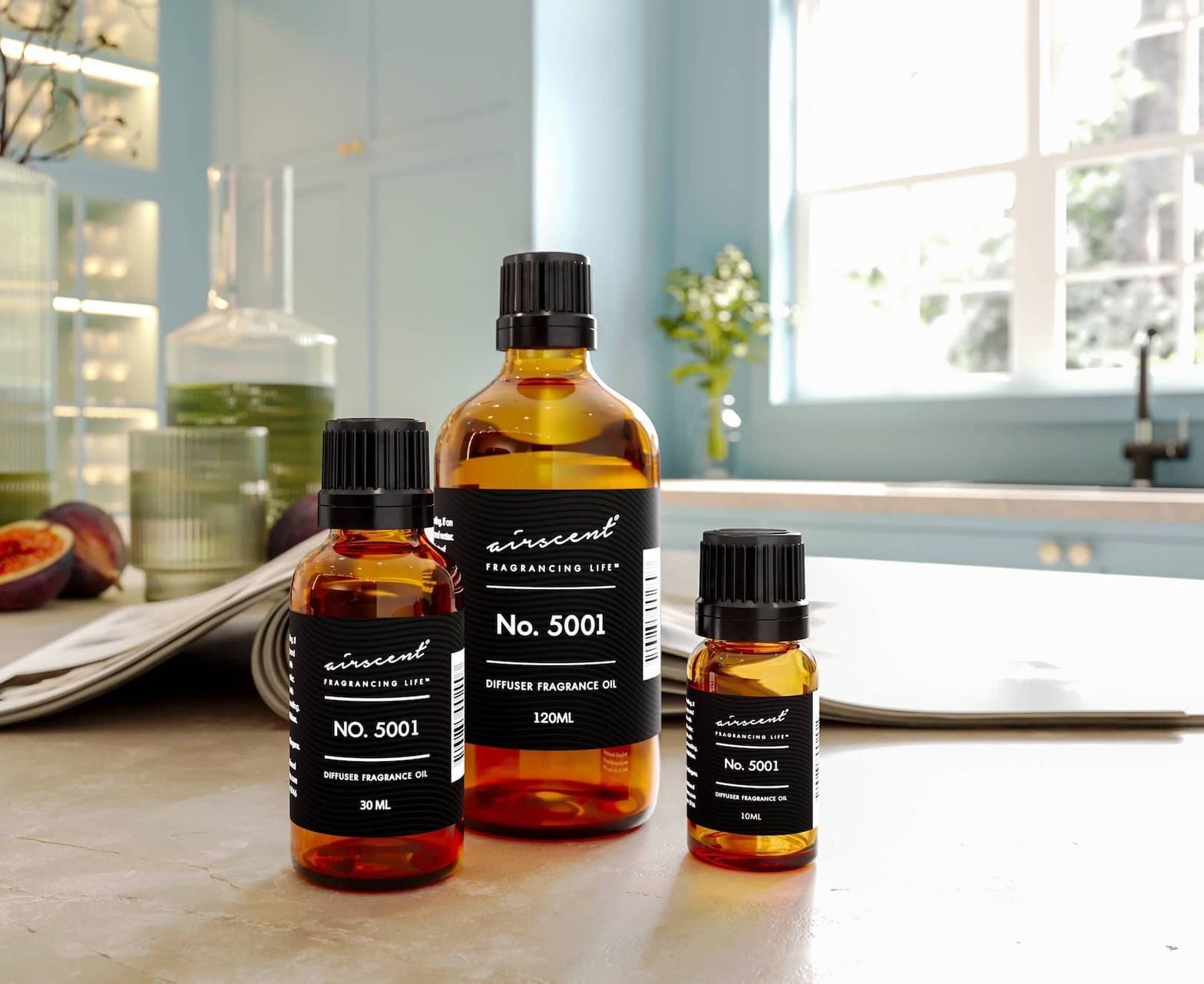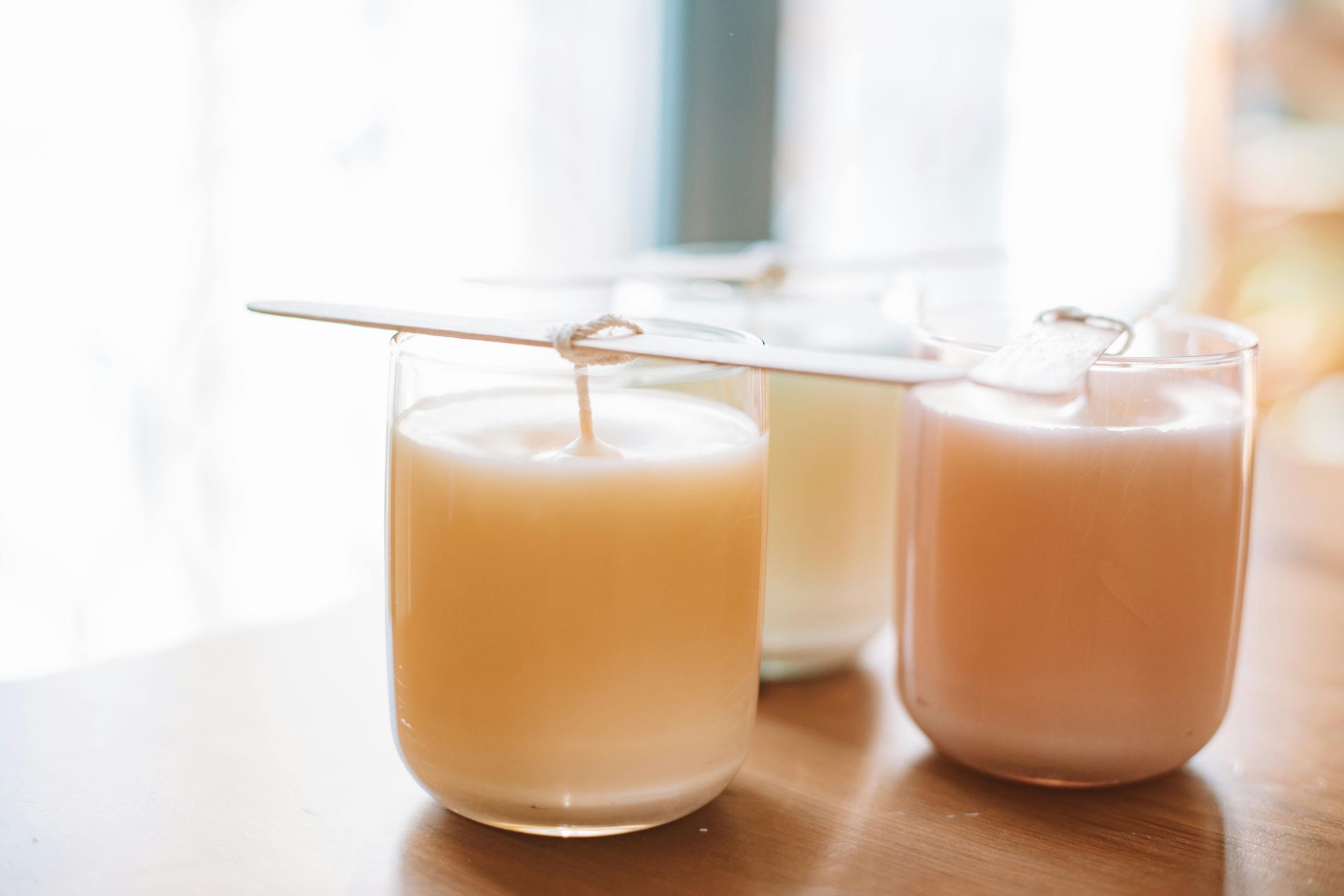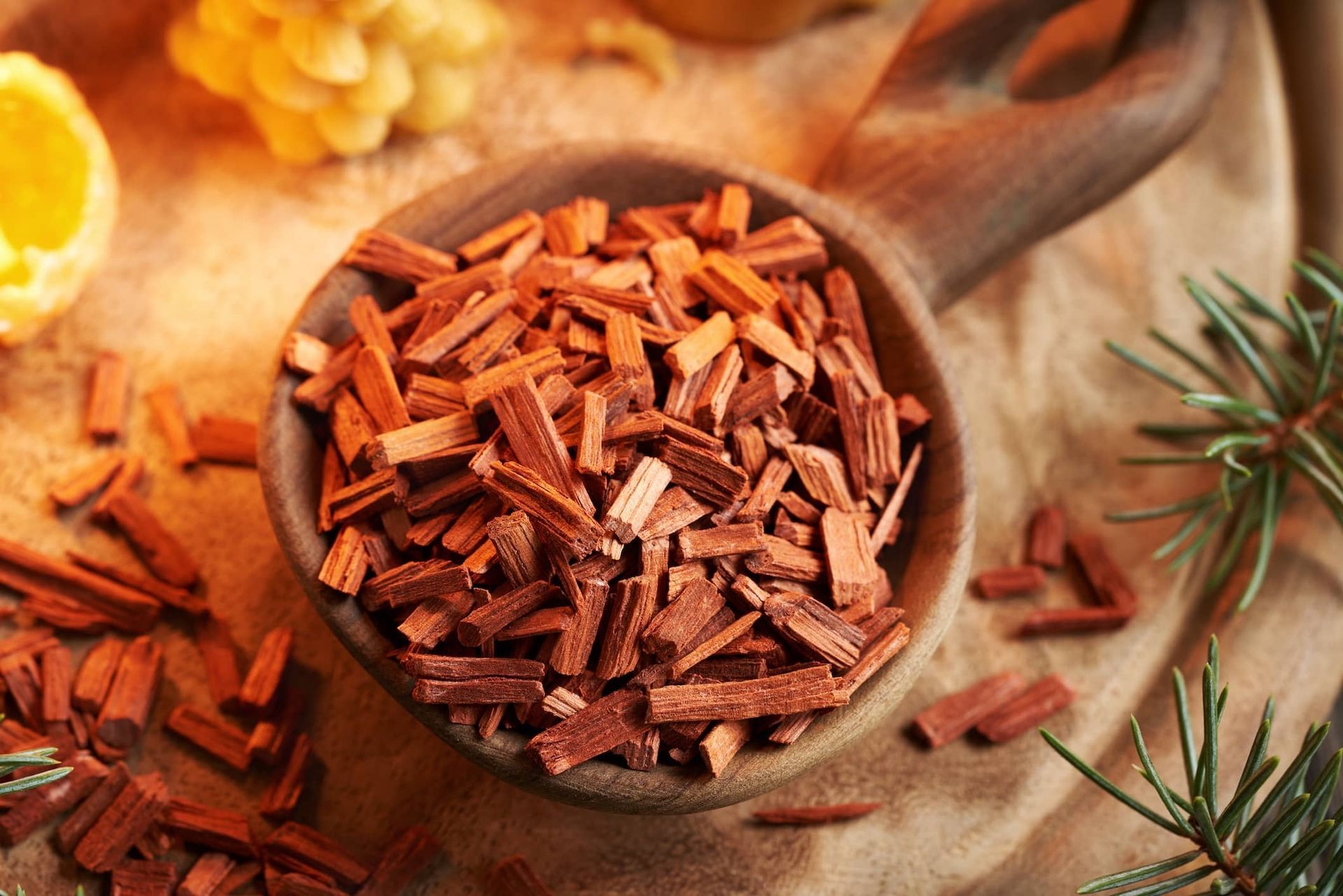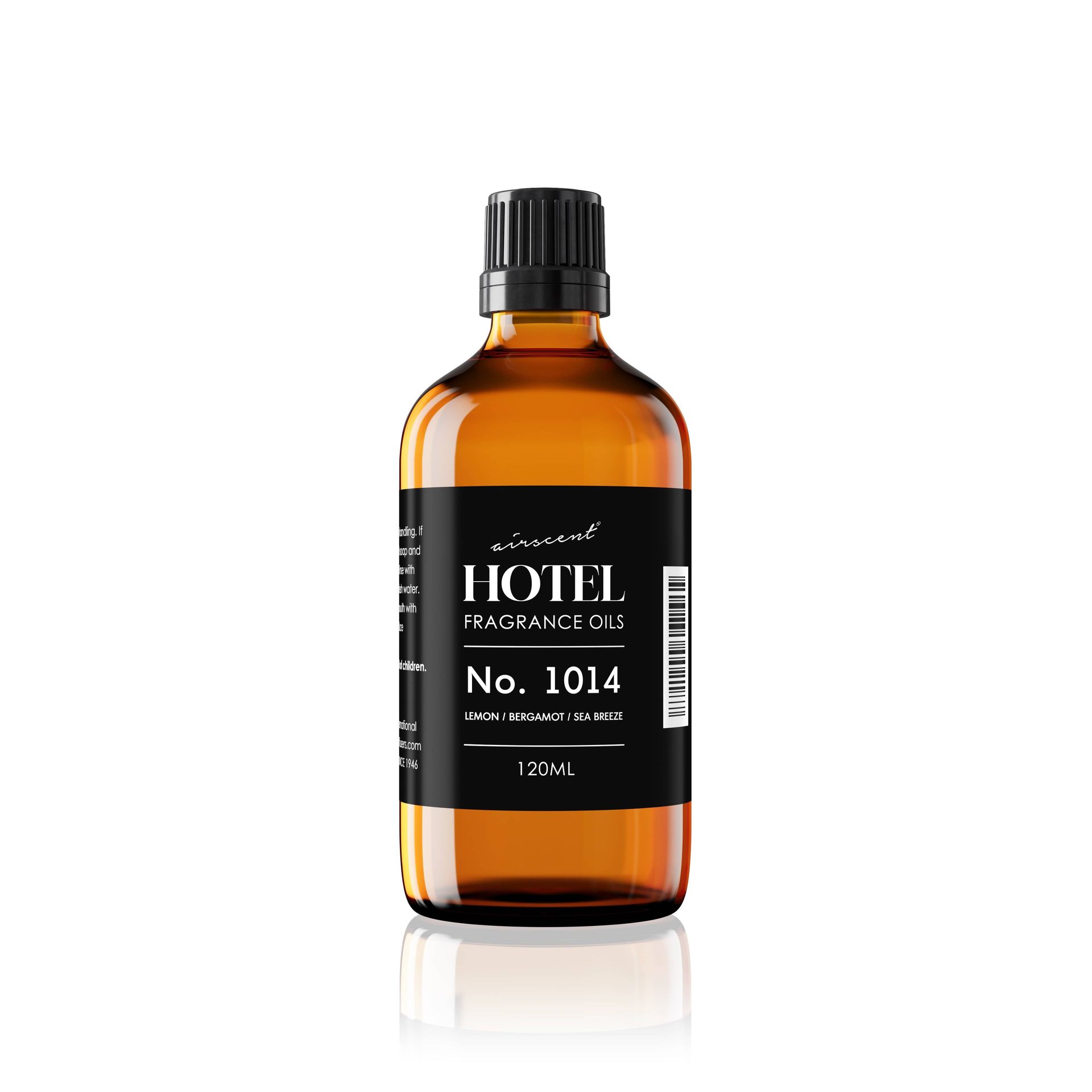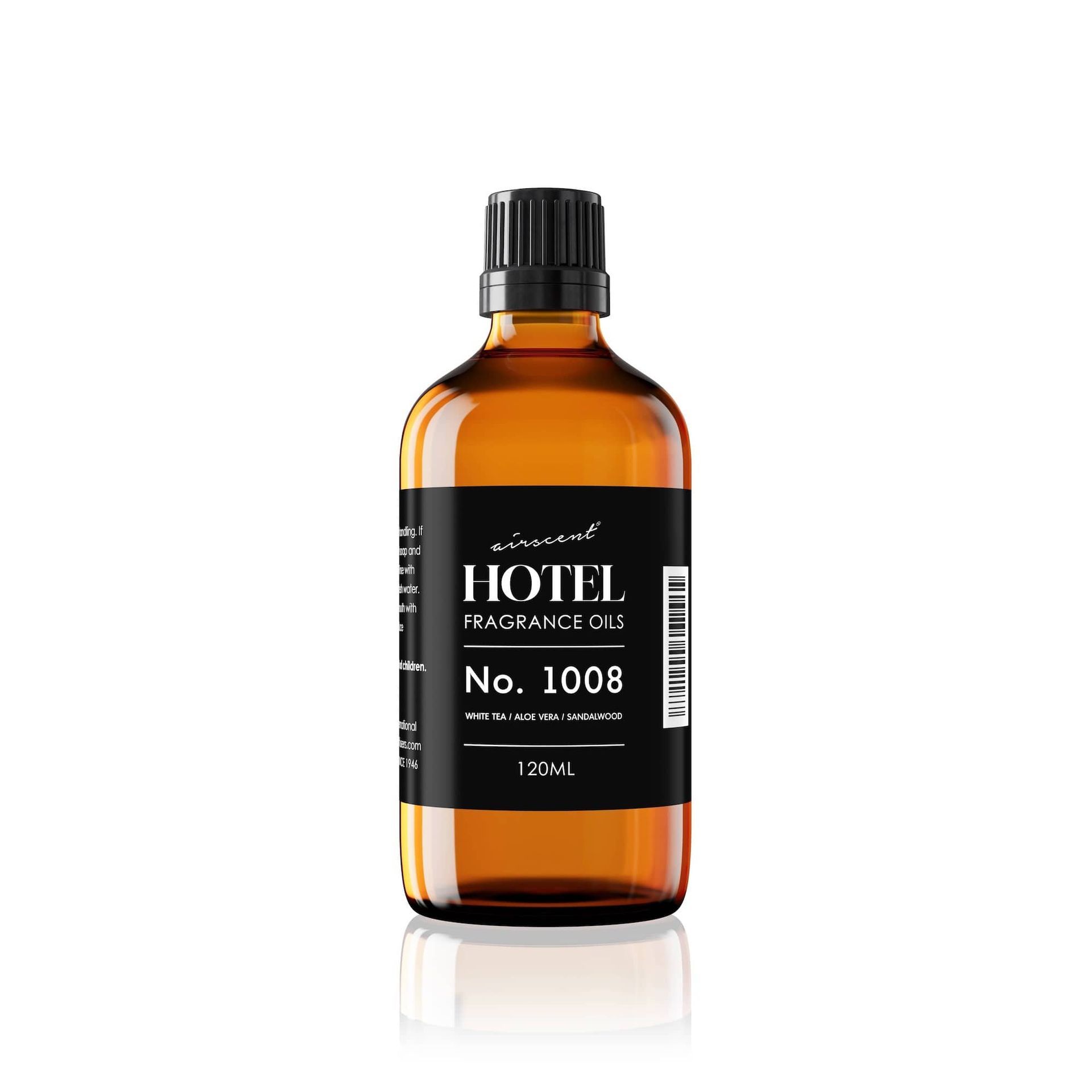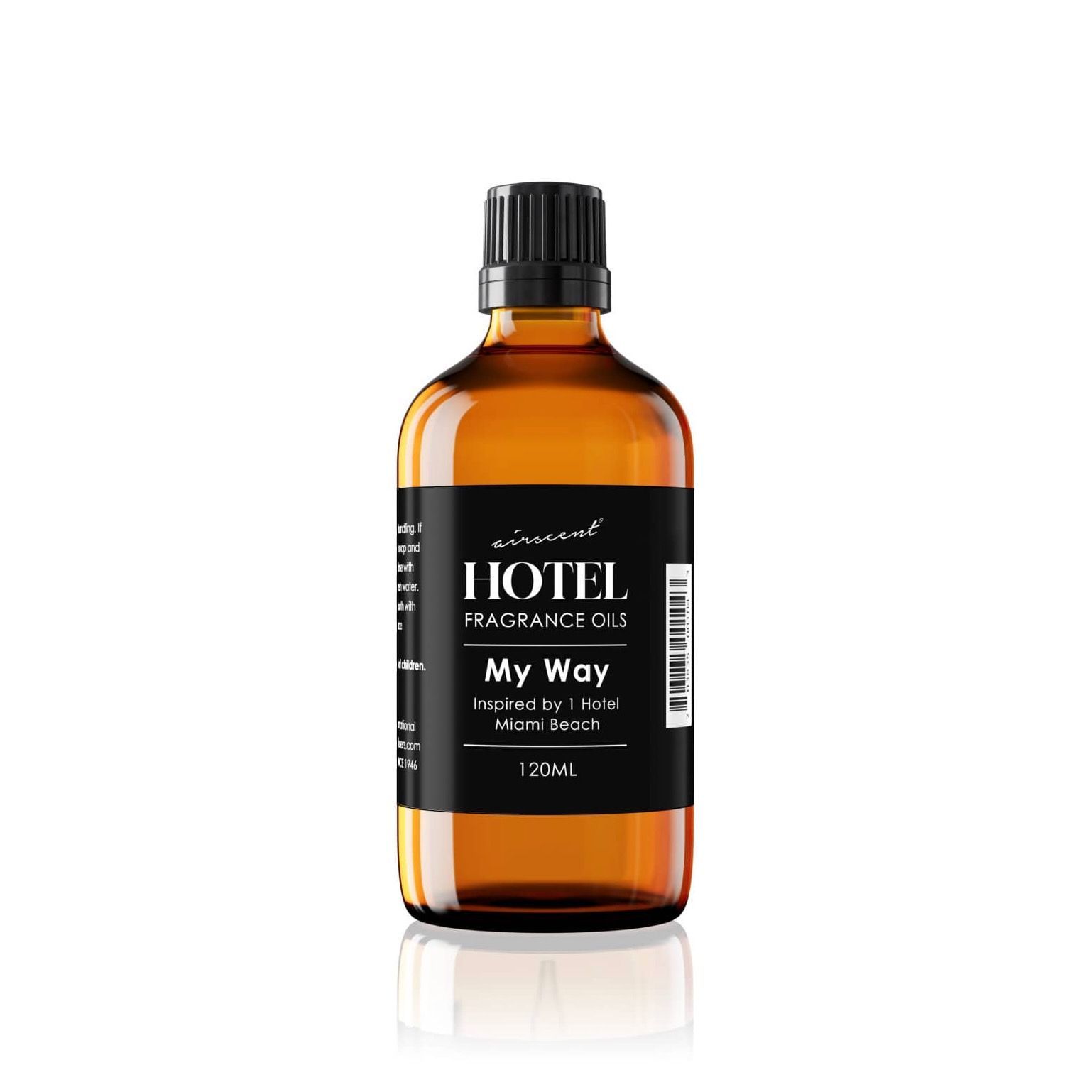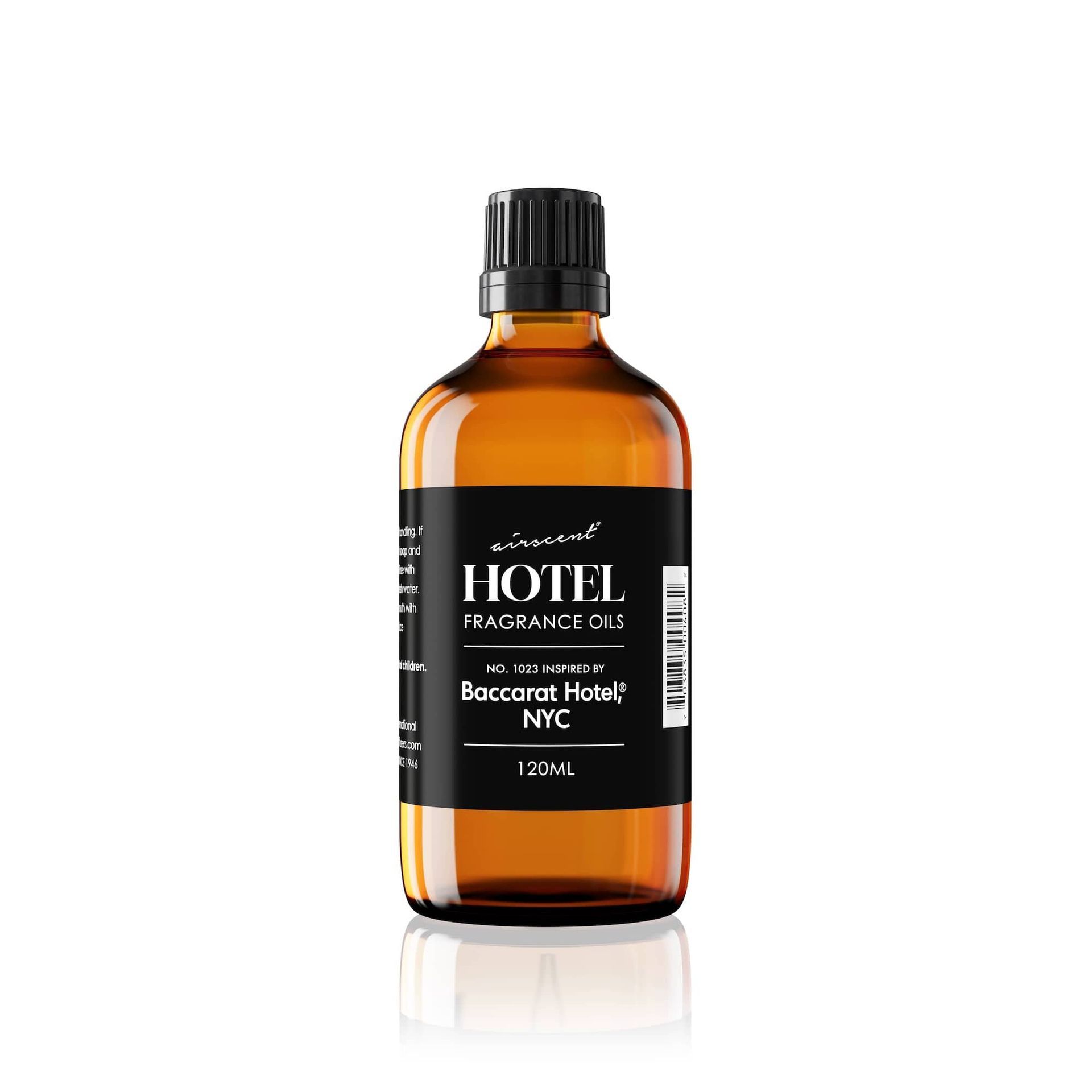A Fragrance Lover’s Guide To The Notes of Fragrance
Fragrance formulation is a complex and elusive art form comprised of a kaleidoscope of aromatic facets that are seamlessly blended to achieve certain moods, feelings and effects.
As our master perfumers can attest, there is so much more than can even be imagined in creating a fine perfume.
In addition to the physical act of blending different scents, significant expertise, acute technical knowledge and skill, artistic innovation and more than a dash of creative panache are required.
All these elements mesh to enhance the foundation of the composition, which are the fragrance notes.
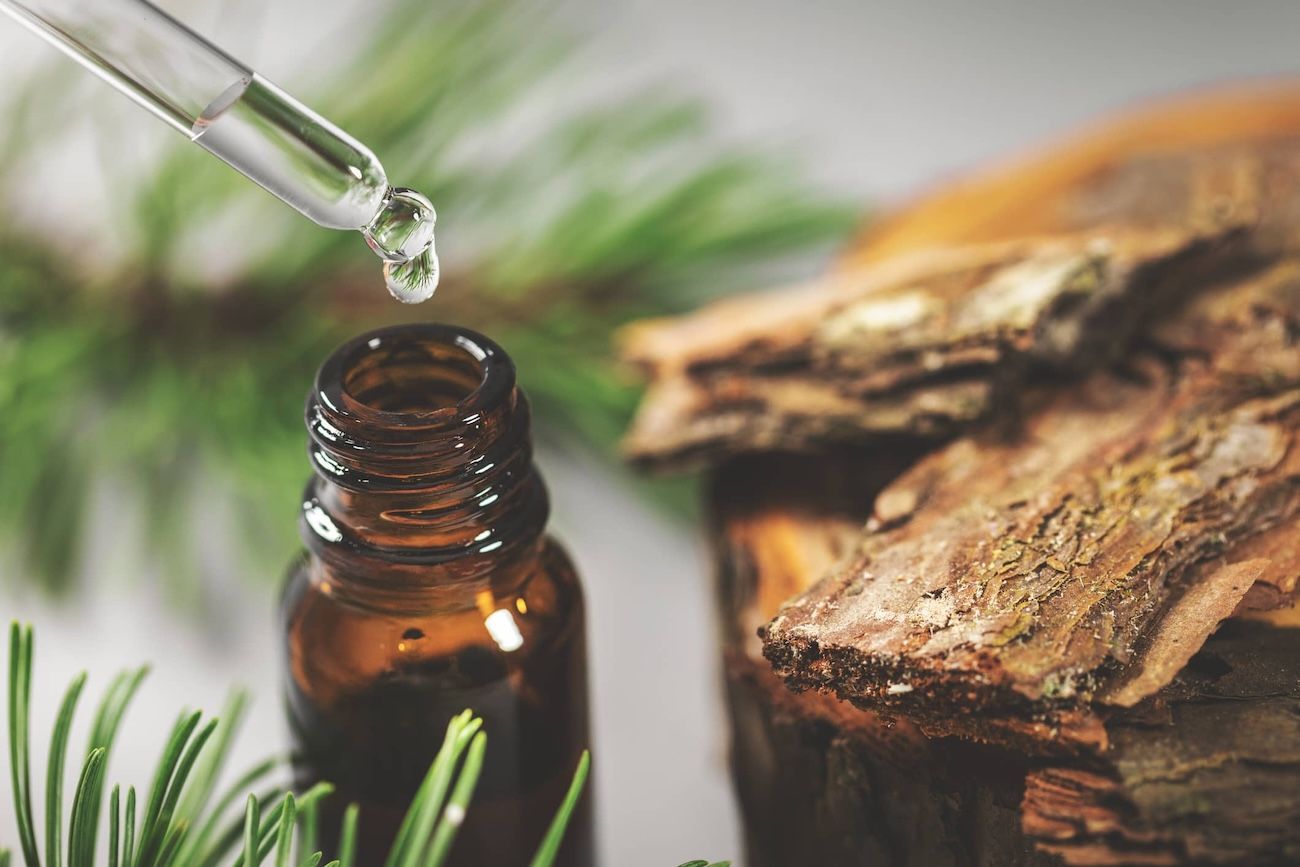
Why Is It Important To Understand Fragrance Notes?
Understanding the
composition of fragrance notes is important because it is the particular choice of notes that collectively define the full dimensions of a perfume.
Specific placement within a scent and how it smells when it interacts with human skin transforms these notes into a unique olfactory experience.
There are literally thousands upon thousands of perfumes that have been developed down through time, and every day new ones appear, fusing ancient molecules in new and diverse ways.
These molecules are the cornerstone of all fragrances, and they come alive when added to a formulation in the same manner that a piece of music does when it is being performed before a live audience.
A renowned French perfumer named Jean Carles (1892-1966) found a way to envelop all the elements of perfume composition into a bold, visual statement.
The fragrance pyramid was his unique interpretation of an artist’s fine palette, which separates colors yet encourages unexpected fusions with neighboring hues and nuances.
He further classified the head, heart and base notes, and ranked them in terms of their volatility and rates of evaporation, ranging from lightest to most tenacious.
In the words of Carles himself:” Perfumery is an art, not a science, as many seem to believe.
A scientific background is not necessary for the perfumer; it may even sometimes prove an obstacle to the freedom required in perfume creation.”
What Exactly Are Fragrance Notes?
Notes represent the distinct layers of a fragrance.
They are divided into three separate elements that are classified within a pyramid. At its top are the head or top notes, which are known to be volatile and evaporate quickly. Middle or heart notes and base notes (dry down) last longer.
All of the notes work seamlessly in tandem, weaving a one-of-a-kind olfactory tapestry.
Knowledge about how these notes work together is the mainstay of their success in the creation of a vast array of fragrance choices for their extensive clientele.
Fragrance Notes Are Like Musical Notes
The nature of fragrance notes can be compared to musical notes in their own olfactory way.
Both types of compositions have a beginning, middle and end, and they require “listening,” so to speak, to the entire piece from the beginning to end in order to appreciate its depth and meaning.
A perfume cannot be judged without assessing its smell any more than the reading of a musical score can be appreciated without hearing the music.
They differ in the sense that a composer of music can place desired notes anywhere within the structure of a piece; a perfumer does not have this luxury.
Decisions must rest instead on the weight and behavior of each molecule, as some are light and others heavier and more long lasting.
What Are The Top Notes of A Fragrance?
These notes are the most fleeting and they define the first impression of a fragrance.
For this reason, they are vitally important. Comprised of small, light particles, they are known to linger in the air from five to fifteen minutes.
They transition seamlessly into the secondary phase of the scent. Usually classified as “fresh” and “sharp,” they are mostly citrus in character, but are also known to feature herbal or floral aspects.
These include: clean, fresh lemon; succulent orange; spicy, light bergamot; soothing, sweet lavender; musky red rose; spicy green basil and sugary anise.
The Heart Or Middle Notes of Fragrance
Comprising about 70% of the total fragrance, their function is to deepen the impression initiated by the head notes.
They also serve as a buffer for some base notes, which can have some unpleasant aromas.
They appear after the head notes begin to fade, and they remain throughout the life of the fragrance.
Also known as the curves of a perfume, heart notes allow a fragrance to become rounder and denser in character.
This note category includes:floral oils such as: haunting jasmine; green, rosy geranium; creamy, waxy tuberose; musky red rose; rich, sugary ylang-ylang; fresh, sweet orange blossom absolute; powdery violet; fiery, clove-like carnation; light tropical lily; sugary, dazzling peony and lush, rich and gingery frangipani.
Heart notes also feature fruity and spicy facets such as: warm, inviting cinnamon; piquant, biting black pepper; woody,
balsamic pine; intensely lemony and fresh lemongrass and spicy, slightly sweet and woody cardamon.
Powdery flowers such as: raspberry nuanced iris; dusty violet; fluffy, sugary heliotrope; green, woody mimosa and orangey, dusty and sweet bloom are also often utilized.
Most fruits are also included in the heart note category as well except for more watery and juicy varieties.
Some popular ones include: red and yellow fruits such as: juicy, green strawberry; tangy, woody-nuanced raspberry; fresh, honey-like blueberry; potent, blackberry; tart, bright red currant; tangy black currant; velvety peach, dense plum and soft apricot.
Exotic, aqueous and juicy fruits are also included in this category of notes. These include: sweet, succulent pineapple; gingery, tropical mango; crisp apple; soft, sugary kiwi; slightly pungent banana; tropical, juicy passion fruit; fresh, dewy melon and green watermelon.
What Are The Base Notes Of Fragrance?
If a perfume is well constructed, these notes can be sensed from the moment a fragrance comes to life. They can be compared to low frequencies in music, as they are deep, slow and long lasting.
Also known as the dry down, “signature” notes and the “soul” of a perfume, these notes, which are found at the base of the olfactory pyramid, are tenacious, and they render a depth and character to a scent.
They are known to evaporate slowly due to their heavy molecular structure, and they last anywhere from two hours to several days.
Classified as dense and rich in nature, they include:
creamy sandalwood; lush, noble
vanilla; warm, dark and honeyed amber and dry, balsamic cedar wood.
What Are The Diverse Families of Scent?
Based on fragrance notes and ingredients, scents are categorized into sectors known as families, which are broken up into seven main categories.
These include: Floral, Oriental (Ambery), Citrus, Oceanic, Chypre, Gourmand and Fougere. Each of these has its own sub set of families, within each of which the possibilities for developing unique scents is endless.
More on each follows below.
Floral Perfumes
Derived from flowers, these perfumes are renowned for their soft, light character and they are most often found in fragrances designed for women. Passionate and romantic, this category offers the biggest variety of scents.
These fragrances connect with Mother Nature and the deep, dark primeval forest. They tend to be earthy, sharp and dry. The most commonly found notes within this category include: spicy, bitter bergamot; intense, musky patchouli; creamy sandalwood and potent, green oak moss. Our Santal 1033 and Santal 1026 diffuser oils are a perfect examples of this warm, sweet and woody category, as is our My Way 1 Hotel inspired scent, our Baccarat Hotel Love Affair blend or our Tom Ford inspired Oud Wood type diffuser oil.
Gourmand Fragrances
The world of food and drink is everywhere within this fragrance category, which is known as “olfactory desserts.” Delectable edible notes include: lush vanilla; freshly brewed coffee; warm honey; rich, burnt sweet caramel, ambrosial, roasted chocolate and fruity-nuanced, pink sugary cotton candy. Our Pumpkin Spice blend is a perfect example of a gourmand fragrance.
Citrus Fragrances
Bursting with cleanliness and freshness, these zesty scents are sharp, energetic and perfect for the warmer months of the year. They are often found in eaux de colognes and eaux de fraiches and are unisex in character. They include facets of: succulent orange; fresh, clean lemon; sharp lime; tart, refreshing bergamot and juicy, honeyed mandarin. Our Aria Hotel scent is a prime exactly of this fragrance category.
Ambery Perfumes
Formerly known as Oriental fragrances, this family is a delightful mix of earthy, musky and animal facets combined with warm notes. Amber is the most prominent inclusion in this category, as it is well known for its intimate, comforting character. Often combined with floral aspects, this sector offers a contrast of lightness with intense sensuality.
Ideal for everyday usage and inspired by the natural perfume of ferns and deep, mossy and woody aspects, these notes are most commonly found in fragrances for men. Freshly mown grass is among the most popular within this category. These scents are light, and ideal for the warmer months of the year. Our
Fresh Cut Balsam Fir and our
Four Seasons Whistler inspired hotel scent are ideal examples of this category.
A salty ocean breeze is the essence of this perfume family. It can also include the aroma of lakes, rivers and clifftop air. Notes can also be even more complex and nuanced with sun-dried driftwood, coastal trees and sand. Usually comprised of synthetic compounds, its name was added to the list of fragrance families in 1991. Our
Baccarat Rouge inspired scent and our
Marriott Hotel blend are ideal examples of this fragrance category.
Selecting The Perfect Scent For Your Interior
Choosing the perfect ambient scent for a business or home can greatly enhance the overall atmosphere and experience of those who visit.
In the case of both, it’s important to consider the purpose of your space and the desired mood.
For example, lavender and vanilla can create a calming environment
for a spa or bedroom, while citrus scents can invigorate a gym
or office.
It’s also important to choose a scent that isn’t overpowering and to test it in the space before committing to a particular fragrance.
Overall, selecting the perfect ambient scent involves a combination of factors that cater to the space and its occupants.
Mood is everything, and it takes time, patience and careful exploration to find the answer, but uncovering that perfect fragrance will require wafting many before the noses of those who must make the decision until the right one suddenly appears.
Fortunately, we have an endless array of diffuser oils and fragrance refills to choose from. Try a few them out and let their individual notes transform your space!
Recent Posts

Our Most Beloved Fragrance Oils
Westin Hotel Scent
White tea, aloe vera, ginger, cedar wood, vanilla, amber, sandalwood & musk.
My Way 1 Hotel
Sandalwood, Jasmine, Vanilla, Musk & Virginia Cedar.
Baccarat Hotel Love Affair
A warm woody aromatic blend of sandalwood, papyrus and musk.



